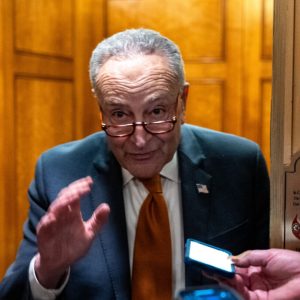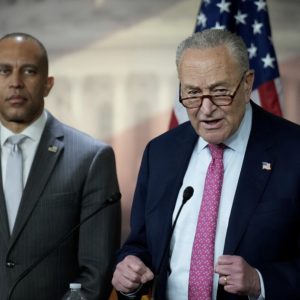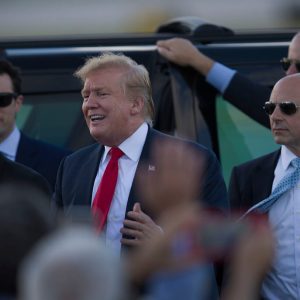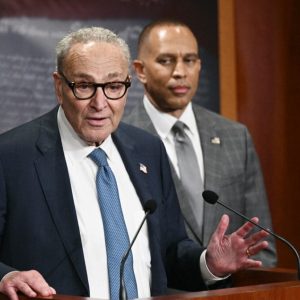Americans awoke Wednesday to the first federal government shutdown in seven years, as political tensions erupted and President Donald Trump seized the moment to needle his opponents. On social media, Trump posted a photo from a White House meeting the day before, showing House Speaker Hakeem Jeffries glancing sideways as Trump pointed at him with a grin. On the Resolute Desk sat two “TRUMP 2028” hats—an apparent dig at Democrats during tense negotiations.
According to sources, the hats appeared moments before Vice President J.D. Vance made a joke that caused the room to break into laughter. Jeffries later claimed he was not handed a hat but found their sudden appearance “strange.” Despite the levity, the negotiations collapsed, and federal funding expired at midnight, officially triggering the shutdown.
The shutdown’s consequences are serious. Trump has pledged to use the impasse to significantly reduce the federal workforce, which could result in tens of thousands of permanent job losses. While essential personnel, including the military’s 1.3 million active-duty members, will continue working, they will do so without pay. Public sector unions have urged Democrats to prepare for a long and potentially damaging disruption.
A House-passed continuing resolution failed in the Senate by a 55-45 vote, with a few moderate Democrats and independents crossing party lines to support it. Senate Majority Leader Chuck Schumer is facing growing criticism from both sides. After previously helping avoid a shutdown in March, he is now refusing to back the GOP-led measure—leading some to label this the “Schumer Shutdown.”
With increasing talk of a 2028 primary challenge from Rep. Alexandria Ocasio-Cortez, Schumer’s recent moves may be more about political survival than legislative compromise. His shift appears aimed at placating the Democratic Party’s progressive base, even as the broader consequences of the shutdown continue to unfold.





